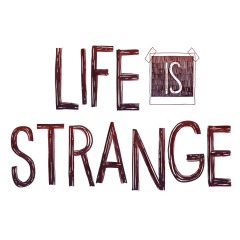
Name
Life is Strange
Creator
Dontnod Entertainment
Publisher
Square Enix
Platform
Microsoft Windows, Playstation 3, Playstation 4, Xbox 360, Xbox 0ne, Android, iOs, Linux
Target Audience
Adults 17+
Formal Elements
Player Interaction Pattern
The game employs a Single Player vs Game interaction pattern. The player interaction with the game propels the narrative as the player collects items, and converses with non-player characters
Objective
The game’s objective is for Max to solve the disappearance of missing student, in addition to why a tornado is heading towards their hometown.
Special Actions
The player can rewind time thus has a chance to pick up on clues and correct mistakes made to solve a puzzle.
Outcome
The outcome depends on the choices the player makes and thus is a key formal element
Fun Intended
The game promises a narrative fun and a discovery fun, which is achieved when the player explores locations in Arcadia Bay while communicating with non-playable characters. The player explores various locations of the fictional Arcadia Bay and thus experiences discovery. The mystery is hidden in the puzzles that the player has to solve. Solving these puzzles by collecting items and making changes to the environment propels the narrative of the game.
Significant Mechanics
The designers chose to employ a mechanic of rewinding time to allow players to redo any action that has been taken. This is the First Order Optimal Strategy that gives novice players the ability to redo their actions hence have a fair chance of solving the puzzles. The player examines and interacts with objects, allowing for puzzle solving in the form of fetch quests which require the player to collect a number of items. Moreover, it allows the player to make changes to the environment. The game allows items collected before time traveling to be kept in the inventory after time traveling. This balances the difficulty of the puzzles, and gives players a fair chance to solve the puzzles.
Rewinding of time
The game employs the mechanic of branching options in dialogue exchanges with non-player characters to allow the player to choose what to say. Choices in dialogue can affect the narrative through short or long term consequences. Something good in the short term could turn out worse later. The contextual secondary heuristics help progress the story and to explore other characters, while the long term heuristic functions to play the story. The player can rewind an event, including the dialogue exchange, and the details provided will still be available in the future. This employs the first order optimal strategy which caters for the novice player to balances the difficulty for players in solving puzzles, and unveiling the long term heuristic.
Moment of Particular Success
The game greatly develops the characters, and the relationship established between characters is powerfully established. Character development is critical to the conflict created at the end where the player can choose to save Chloe or to save Arcadia Bay, as it makes the choice emotionally intense. Without properly developing Chloe’s character, the emotions wouldn’t be as intense and the moment wouldn’t be as meaningful.
Potential Changes
The key mechanic in the game is Max’s ability to rewind time. The designers opted for a first order optimal strategy that balances the difficulty of the game for inexperienced users. It would be interesting to have a limited number of rewinds to experiment with different difficulty levels where the player can’t redo all actions but must choose which actions to redo. This could be limited to the very critical actions, and establish increased tension for the consequences that would arise from making the wrong choices in a harder puzzle solving scheme.


